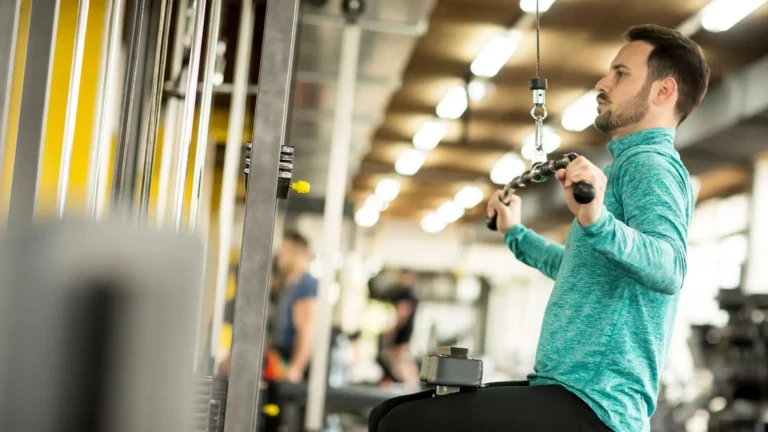Table of Contents
For many people, fitness is one of the first things sacrificed when money gets tight. Gym memberships, fitness apps, and personal trainers since they add up fast. However, the truth is that staying fit doesn’t have to be expensive.
In fact, some of the most effective workouts, nutrition plans, and accountability systems are completely free or already available in your community, if you know where to look.
You don’t need a luxury gym to get in shape. You need consistency, creativity, and the right mindset. Let’s explore how to build a strong routine that saves both money and motivation.
The Fitness Cost Trap: Why Most People Overpay
When people start their health journey, they often equate “investment” with “results.” A new membership, expensive supplements, or branded gear feels like a commitment. However, most of those costs fade long before the results are realized.
Here’s where the overspending happens:
- Gym Membership Guilt: The average gym-goer visits less than 7 times a month, meaning $400+ per year wasted on unused access.
- App Overload: Subscriptions for yoga, HIIT, and meditation all stack up quietly in your account.
- Equipment Hoarding: Buying dumbbells, mats, and resistance bands “just to start”, and using them twice.
Healthy living spending should align with use and motivation, not impulse. Once you separate the marketing from the movement, the savings follow.
Read related blog: How to Get a Discount at Lifetime Fitness
Free Fitness Plans That Actually Work
The internet is flooded with free workout programs that rival those offered for a fee. The challenge isn’t access. It’s filtering quality. Here are tried-and-tested free options that deliver real results:
1. YouTube Workouts
YouTube is the world’s largest free fitness platform.
- Strength Training: Caroline Girvan, HASfit, or Fitness Blender offer structured 4–8 week plans.
- Yoga & Mobility: Try Yoga with Adriene or Move with Nicole for improved flexibility and recovery.
- HIIT & Cardio: Pamela Reif and Chloe Ting provide guided, time-efficient routines.
2. Open-Source Apps
- Nike Training Club (NTC): Free access to hundreds of workouts, from beginner to advanced.
- FitOn: Personalized programs with celebrity trainers, completely free.
- MapMyRun: Ideal for tracking outdoor runs or walks without requiring a premium subscription.
3. University & Public Health Resources
Many universities and health organizations offer free exercise programs or PDFs that focus on full-body wellness, stretching, and home fitness. The CDC and NHS, for instance, have printable weekly workout plans for all ages.
Consistency matters more than cost. These free programs are proof that the best gym is the one you build at home with Wi-Fi and discipline.
Community Fitness: Moving Together, Spending Less
Fitness becomes easier when it’s social and community-driven, and options are often free or donation-based.
1. Local Parks & Recreation Departments
Most cities run:
- Free yoga or aerobics in the park
- Weekend walking or running clubs
- Low-cost Zumba or dance classes at community centers
2. Libraries and Civic Spaces
Public libraries aren’t just for books. They host meditation sessions, movement workshops, and even free health screenings.
3. Faith-Based and Nonprofit Programs
Churches, NGOs, and wellness groups often organize free or low-cost fitness sessions, especially for seniors or families.
4. Meetup & Eventbrite
Search “free fitness” + your city, and you’ll find weekend hikes, outdoor bootcamps, and dance meetups that cost nothing but your time.
Social accountability can often do more for your fitness than any trainer, and it doesn’t require a monthly bill.
Read related blog: Does Health Insurance Cover Gym Membership?
The Accountability Economy
How to Stay Consistent Without Paying for It
Most people don’t need more fitness tools. They need accountability. That’s why expensive gyms and trainers thrive: they sell you the promise of showing up. However, accountability doesn’t have to come with a monthly fee.
Start small and social: find a friend, coworker, or neighbor with similar fitness goals. Create a shared WhatsApp or text thread where you check in after each workout. You’re not paying for pressure. You’re paying attention to progress.
You can also join online challenge groups. Many trainers and nonprofits host free 30-day challenges that include daily check-ins and live streams. That little social push is often enough to keep you consistent long after the novelty wears off.
Here’s the truth: you don’t need someone shouting “one more rep” in a gym. You need someone who asks, “Did you move today?”
DIY Fitness Equipment: Train Smart with What You Have
Who said a good workout needs fancy gear? You already own most of what you need for strength and conditioning.
- Chairs & Steps: Perfect for tricep dips, step-ups, or elevated push-ups.
- Backpacks: Fill them with books for DIY weighted squats or lunges.
- Towels & Bands: Resistance substitutes for rows and mobility work.
- Walls: Great for wall sits or supported stretches.
Even bodyweight exercises alone (push-ups, squats, planks, burpees) are scientifically proven to improve muscle tone, endurance, and cardiovascular health.
The goal isn’t to buy your way into fitness. It’s to use what you already have efficiently.
Seasonal Fitness Swaps: Move With the Weather, Not Against It
Aligning your workouts with the seasons keeps things fresh, fun, and free.
- Spring: Perfect for running clubs, outdoor yoga, and park workouts. Most cities host free weekend fitness events this time of year.
- Summer: Embrace water-based fitness activities, such as swimming, paddleboarding, or taking long evening walks. Early mornings and late evenings are ideal for cooler, crowd-free exercise.
- Fall: Hiking season. Trails and nature walks are free cardio that double as therapy. Bring a podcast or a friend.
- Winter: Swap outdoor intensity for indoor consistency. Bodyweight circuits, dance workouts, or even stair climbing at home can help you stay fit without needing to leave your home.
Think of it this way: your body craves variety, not monotony. Seasonal shifts prevent burnout and eliminate the need for expensive gym contracts you’ll forget to cancel come summer.
Read related blog: How to Get a Discount at the Gym
The Power of Walking and Commuter Fitness
If you commute daily, you already have built-in opportunities for fitness. Walking, cycling, or taking the stairs instead of elevators can dramatically reduce both your costs and transportation expenses.
Consider this:
- Replacing a 10-minute drive with a brisk 20-minute walk burns ~100 calories each way and saves fuel money.
- Biking short errands instead of driving can save $50–$100/month in gas and parking fees.
This is what Beem calls a “dual savings habit”, where one action improves both your health and your finances.
The Hidden Fitness Network in Your Neighborhood
- Community Tracks & Courts: Public schools or parks open their tracks after hours.
- Apartment Gyms: Many residents overlook or never fully explore the available equipment.
- Trail Systems: Urban greenways or riverside walks offer free cardio with views.
- Recreation Equipment Libraries: Some towns allow residents to borrow bikes, paddles, or gear for free.
When you start thinking of your neighborhood as your gym, every bench, park, and path becomes an opportunity for exercise.
Why Movement Feels Better When It’s Yours
When you pay for a gym membership, the experience often feels transactional. But when you move freely, outdoors, at home, or in community spaces, it becomes emotional. You start reconnecting with your body instead of your bank balance.
There’s real psychology behind this. Studies show that people who exercise in natural, self-directed environments report higher satisfaction and stick with their routines longer. Why? Because they associate the activity with autonomy, not obligation.
So, next time you head out for a walk, consider dropping your headphones for five minutes. Listen to your surroundings. Feel the air, the pace, the rhythm that’s yours alone.
Read related blog: How to Make Money as a Fitness Influencer
Food and Fuel: Eating Smart Without Overspending
Nutrition is where most fitness budgets go off track. Supplements, meal plans, or “health” snacks often do more harm to your wallet than good to your body. Here’s how to trim the fat:
- Cook in Batches: Preparing meals in batches reduces delivery costs and facilitates portion control.
- Skip Supplements: Unless prescribed by a doctor, most can be replaced by whole foods.
- Seasonal Shopping: Fresh local produce is cheaper and more nutrient-dense.
- Use Cashback Apps: Beem and grocery reward programs can offset grocery bills when tied to recurring healthy purchases.
Healthy eating isn’t expensive when it’s planned; it’s when it’s impulsive.
The Beem Advantage: Automate and Track Your Fitness Budget
Beem helps you see health as part of your financial ecosystem. You can:
- Track fitness-related expenses, such as gym fees or subscriptions, with Beem’s BFF Budget Planner.
- Tag and review recurring health expenses monthly.
- Redirect savings from canceled memberships to a “Health Fund.”
- Use Everdraft™ Instant Cash for medical or wellness emergencies with no interest, no credit checks, and no income restrictions.
Beem turns your wellness journey into measurable progress, both physically and financially.
Hidden Fitness in Everyday Life: The “Incidental Movement” Revolution
Some of the most powerful workouts happen when you’re not trying to work out at all.
Walk while taking calls. Do calf raises while brushing your teeth. Stretch during Netflix. Park farther from the store. Carry your groceries in two trips instead of one. These “micro-movements” add up to hundreds of calories burned weekly, with no gym membership required and no scheduled time needed.
In Japan, this is called the “kaizen movement”, the idea that small, consistent improvements compound into transformation. You don’t have to “go to the gym” to be active. You need to stop being still. This mindset is especially powerful for people balancing tight schedules or budgets.
The Joy Dividend: How Saving on Fitness Improves Mental Health
Saving money on fitness doesn’t just strengthen your wallet. It strengthens your peace of mind. Financial stress is one of the most significant barriers to good health. When you stop tying your fitness success to monthly payments or brand names, you remove that invisible pressure.
Instead, you rediscover joy. The joy of movement without metrics. The joy of community walks. The joy of progress that isn’t bought, it’s earned.
Over time, this “joy dividend” pays off in surprising ways: better sleep, sharper focus, calmer mornings, and a growing sense of self-trust. You’re not just working out your body; you’re rewiring your relationship with money, discipline, and well-being.
And that’s the ultimate return on investment, one no gym contract could ever match.
Read related blog: How to Get Gold’s Gym Free Trial [Step by Step]
FAQs on How to Save on Fitness: Free Plans and Community Options
Are free workouts as effective as paid ones?
Absolutely. Free programs from trusted trainers online follow the same exercise science principles as paid ones. The key factor is consistency and proper form, not payment. Stick to a routine for 4–6 weeks, and you’ll see results that rival any gym plan.
How can I stay motivated without a gym membership?
Join local groups, track progress visually, and reward yourself for milestones. Beem’s goal tracker helps you visualize improvement and tie it to financial wins. Motivation grows from seeing results, not from paying for access.
Is walking or cycling enough for fitness?
Yes, especially for beginners or those looking to maintain their health. One hundred fifty minutes of moderate activity weekly meets most health standards. Pair it with light resistance work at home, and you’ll naturally build balance and endurance.
What’s the cheapest way to start strength training?
Bodyweight routines are free and powerful. When you want variety, buy resistance bands for under $20. They’re portable, safe, and versatile. Focus on progressive overload by adding reps or time, rather than relying on expensive weights.
How can Beem help me manage my fitness goals financially?
Beem categorizes your spending, tracks savings from canceled memberships, and helps you redirect funds to new goals, such as an emergency fund or a wellness trip. It keeps both your wallet and your willpower in sync.
From Paying for Fitness to Living It: The Beem Way
Saving on fitness isn’t about doing less. It’s about doing smarter. When you stop equating health with high costs, you begin to realize how truly accessible strength, movement, and balance are.
Every park workout, community run, or at-home session isn’t just a saving; it’s a statement. You’re proving that wellness doesn’t need to be branded, subscribed to, or swiped into. It just needs consistency and a plan.
The best part? You can build that plan around your real life, not your paycheck. Beem makes that possible. The app helps you track every dollar you used to spend on memberships or classes and redirect it toward what actually supports your well-being — better nutrition, quality gear, or a small emergency fund. Download the app now!















































